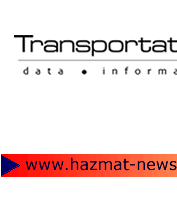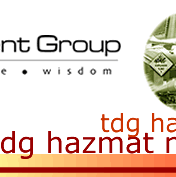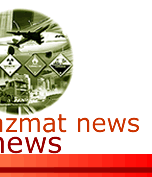




Because of Operation Hazstrike at major US Airports, more people than ever are facing DOT penalties.
What is "Operation Hazstrike"?
A concentrated effort by the FAA to inspect carriers, freight forwarders and their shippers at selected airports around the country.
How does it work?
The FAA special agents visit air carriers offices and inspect their "90 day file" which is a record of all hazardous shipments sent by air within the last three months. They can also inspect any shipments on hand at that time.
They then notify the freight forwarder, shipper and others involved in the shipment and give them 30 days to produce training records proving compliance with the training requirements of 49 CFR. If during the inspection they have uncovered a probable violation, they will notify the responsible persons at that time through a "Notice of Probable Violation".
What are the next steps?
In the case of a suspected violation, the responsible persons have 30 days to make an initial response and present facts pertinent to the case. If the FAA feels that a violation did occur the can take further enforcement action including the next step which would be a "Notice of Proposed Civil Penalty".
Is this public information?
Yes, if the proposed penalty is $50,000 or over it is released to the news media. Even the news media themselves are not immune -- just this month Reuters News Agency themselves received notice of a proposed $100,000 fine against them for a FedEx shipment of ink; and this is now a matter of public record, even before the case is completely adjudicated.
What is "penalty mitigation"?
This is the process that the DOT allows for persons facing a penalty to reduce it through proper remedial training, and corrective action.
How much can the penalty be reduced?
Before the Valujet incident it was not uncommon to get $50,000 penalties reduced to $10,000 to $20,000 dollars. Yet that is increasingly unlikely as public, and legislative scrutiny focuses on the DOT and their enforcement efforts. If the DOT (especially the FAA) proposes a fine, you can bet that they'll stick pretty close to it unless there are substantial mitigative circumstances presented during the hearings.
What are the DOT "penalty guidelines"?
These are recommended penalties published for certain types of hazmat infractions. However, they are only starting points and are frequently exceeded by the modal agencies like the FAA.
Sample Penalty Actions
$100,000 Reuters News Agency (a shipment of ink)
$375,000 Lone Star Aviation (Dallas air carrier, improper shipping of a flammable liquid)
$62,500 Longview Inspection Co. (batteries)
$60,000 LCM Transhield (undeclared shipment)
$82,500 Stark Sales (improper shipment of resin)
$65,000 Kasaba (a Peruvian company)
These are just some of the recently announced proposed penalties from the FAA. You can contact us for a complete list (the entire DOT list is nearly 100 pages). Or view an abbreviated list of penalties recently proposed.
Are you at risk for a penalty?
If you ship any item classified as a hazardous material you are at substantial risk of getting your shipment inspected. "Hazmat" includes consumer items such as Paints and other flammables, compressed gasses, cleaning compounds, perfumes, aerosols and hundreds of other items that fall into one of the DOT's nine hazard classes.
The fines range can go as high as $27,500 dollars per violation, per day.
Have you already received notice of a probable violation?
We can assist you, and your legal counsel, in making the proper response, and to take advantage of the DOT's "penalty mitigation" process.
What are the basic steps that the DOT will take in pursuing a violation?
There are specific steps outlined in 49 CFR that the DOT must take in pursuing a civil penalty against a shipper or carrier. Those steps are:
Notice of Probable Violation
Notice of Proposed Civil Penalty
Final notice of Civil Penalty
During this process and through formal and informal hearings and meetings with the DOT we can help you prepare your response, and address the "mitigative" steps that will ensure the DOT that corrective action is being taken.
In addition, we can review all of the FAA notices and correspondence to ensure that a violation did in fact occur and we can research the rules and the circumstances to present your facts, explanations and actions in the most favorable light possible.
TDG is an IATA approved hazardous materials training school founded in 1992. TDG’s founder, Jim Powell, has been providing hazmat training for over 20 year throughout the U.S. and in Europe and Asia.
Transportation Development Group
E-mail: jim@dgtraining.com
Home | Services | Products | About TDG | Schedule | Training Registration | Contact Us
 |
 |
 |
 |
||
 |
|||||